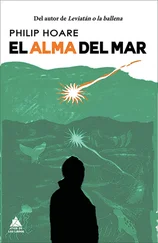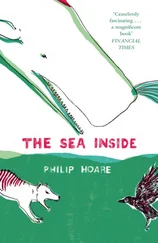1 ...8 9 10 12 13 14 ...20 The Chapel, Moby-Dick
At the entrance of the Seaman’s Bethel–which, with its clapboard and its square tower, resembles a ship sailing over the brow of Johnny Cake Hill–a veteran from the mission next door shows me inside, then steps out for a smoke, leaving me to wander around alone. The dark hallway opens into an airy space lined with box pews and white marble slabs set into the wall, each a witness to past mourning, ‘as if each silent grief were insular and incommunicable’.
In Memory of
CAPT. WM. SWAIN
Master of the Christopher
Mitchell of Nantucket.
This worthy man,
after fastning to a whale,
was carried overboard by
the line, and drowned
May 19th 1844,
in the 49thYear of his age.
Be ye also ready: for in such an hour as ye think not, the Son of man cometh .
The Bethel’s ministry was and is the sea; new names are added to these plaques as the port loses its sons to the ocean. Yet this place could be a stage set, and, for all I know, John Huston’s cameras might still be in the gallery, filming his 1954 version of Moby-Dick , while the high-ceiled chapel echoes to the plaintive hymn of Jonah’s plight,
The ribs and terrors in the whale Arched over me a dismal gloom
and Orson Welles, playing the fictional Father Mapple of Melville’s story, sermonizes to his sea-bound congregation on the same biblical story,
Yes, the world’s a ship on its passage out, and not a voyage complete; and the pulpit is its prow.
Here Ishmael pays his respects to his maker, and here he listens to Father Mapple preach from a pulpit constructed to look like a ship’s prow. But Huston’s film–which received its world premiere in New Bedford’s State Theatre, after a parade through the town led by its star, Gregory Peck–was actually made in England, and the theatrical pulpit that stands here now was commissioned in 1961 from a local shipwright to satisfy movie fans who came here expecting to see it.
Outside, the streets that Ishmael saw as dreary ‘blocks of blackness’ are empty of extras as I cross the road to the modern Whaling Museum, where I am greeted by the skeleton of a fifty-ton, sixty-six-foot blue whale hanging over the receptionist’s desk like a gigantic children’s mobile.
Washed ashore on a beach on nearby Rhode Island in 1998, this specimen was, at six years old, just a baby, but it created a giant problem. Claimed both by the museum and by the Smithsonian Institution, a compromise was reached; a leviathanic judgement of Solomon. It was agreed that the museum could have the whale, on condition that it was put on public view, visible by day and night.
In order to accomplish this feat, the whale first needed to be taken apart. The carcase was cut up into sections which were then lowered into the river in cages. For two years the minute denizens of the Acushnet ate away at the whale’s flesh, until its skeleton was picked as clean as a spare rib. The reassembled result now swims through an atrium built to satisfy the Smithsonian’s stipulation, an orphaned infant in a glass limbo. Incontinently, it still drips oil, like sap from a newly cut conifer or tar from a railway sleeper. The scent pervades the hall: an indefinable ocean aroma, imparting an oiliness to the air itself.
New Bedford’s museum is compendious; almost every known image of the whale is represented here. Most splendid of all is Esaias van de Velde’s Whale Beached between Scheveningen and Katwijk, with elegant sightseers of 1617, which shows just one in a series of sperm whales thrown upon the coast of the Netherlands in the sixteenth and seventeenth centuries. Such strandings were emblems of the country’s fortunes at a time of flux, and in scenes of composed disaster they were replicated in engravings and even on Delft plates and tiles. They were narratives of the Dutch Golden Age–and the threats to it–and in one extravagant and remarkably accurate image, Jan Sanredam depicts a sixty-foot-long sperm whale washed up at Beverwijk on 19 December 1601.
The whale lies between land and sea; its physicality is startling, almost overwhelming. Arranged along the length of its belly are finely dressed visitors in doublets and ruffs–among them, the artist himself, seen in the foreground with his assistant holding up his cape as a screen while his master sketches. As they strike poses or perch on horseback, there is a strange, allegorical distance between them and the whale, as if they existed entirely in other dimensions. Here a whale, there the people.
Even the dogs stare.
The most prominent figure at the centre of the picture–and to whom it is dedicated–is the beplumed Prince Ernest, Count of Nassau. He was hero of the recent war against Spain, yet he uses a handkerchief to protect his aristocratic nose from the stench. Others clamber onto the whale itself; one officer plunges his sabre into its spout hole.
They crawl like ants, these humans, over and around the ravished animal. Behind its massive but now impotent tail, over which a rope has already been thrown, carriages convey more silk-clad noblemen, and tents have been set up to cater for the crowds which appear to be arriving in droves. Had it been stranded across the English Channel, this creature would have been the property of the Virgin Queen; Elizabeth I was fond of whale meat. Here in Holland, it was the subject of artists who sought to capture the strange mortality of such natural phenomena. In 1528 Albrecht Dürer, who was nearly shipwrecked, and subsequently suffered a fever which precipitated his early death when trying to reach a stranded whale ‘much more than 100 fathoms long’ in Zealand, reported that the local population were concerned by ‘the great stink, for it is so large that they say it could not be cut into pieces and the blubber boiled down in half a year’. Such incidents seemed harbingers of death: the Scheveningen whale took four days to die, at which point its bowels exploded, fatally infecting its audience.
Full of potent signs and wonders, Sanredam’s picture is framed with the apocalyptic events foretold by the coming of the leviathan. A pair of cherubs supports a cartouche containing a recent earthquake, Terra mortus . On either side, we see eclipses of the moon and sun, themselves flanked by halves of the severed whale, its future fate. Meanwhile Father Time looks down from one corner, and a winged Angel of Death aims his bow from the other, symbol of the plague that had recently ravaged Amsterdam. In a picture so rich in imagery, it is notable how one’s attention is drawn to the animal’s extended penis. Like a sixteenth-century codpiece, it makes a statement of virility, or its lack; its flaccidity is a counterpoint to the prince’s upright plume, and the whale’s name. From a zoologist’s point of view, however, it is proof that only bull sperm whales venture this far north.
New Bedford’s museum is full of whales as seen by men. Whales spouting blood as sailors ride them like jockeys. Whales belly-up, gasping as harpoons and lances are teased into their undersides. Whales painted in Hollywood style, apparently triumphant. What would Ishmael say if, while awaiting his whaling passage, he decided to loiter a little longer in the port–say, a hundred and fifty years or so–and paid his seven dollars at the cash till to cast a critical eye over this collection?
In the chapter entitled ‘Of The Monstrous Pictures of Whales’, our stern narrator takes issue with such ‘curious imaginary portraits’. He lays the blame with the ancients as the ‘primal source of all those pictorial delusions’; but the worst offender of his day was Frédéric Cuvier, brother of Baron Cuvier, the distinguished French scientist. His Sperm Whale of 1836 was, as Ishmael put it bluntly, ‘a squash’. It was a question of attribution. Advised by the French Academy that there were no fewer than fourteen species of sperm whale, artists duly delivered images more like fashion plates of Directoire dandies, whales corseted and collared à la mode , sleek with fish tails, or with disproportioned bellies and misplaced eyes.
Читать дальше












